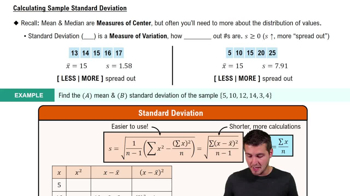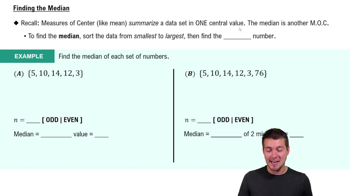Here are the essential concepts you must grasp in order to answer the question correctly.
Odds vs. Probability
Odds represent the ratio of successful outcomes to unsuccessful outcomes, while probability measures the likelihood of an event occurring out of all possible outcomes. For instance, if the odds of winning are 2:3, the probability of winning is calculated as the number of successful outcomes divided by the total number of outcomes, which in this case would be 2 out of 5.
Recommended video:
Visualizing Qualitative vs. Quantitative Data
Standard Deck of Cards
A standard deck of playing cards consists of 52 cards, divided into four suits: hearts, diamonds, clubs, and spades. Each suit contains 13 cards. Understanding the composition of the deck is essential for calculating the odds of drawing a specific suit, such as spades, which directly influences the outcome of the problem presented.
Recommended video:
Calculating Standard Deviation
Calculating Odds
To calculate the odds of an event, you need to determine the number of successful outcomes and the number of unsuccessful outcomes. For example, if there are 13 spades in a deck of 52 cards, the odds of drawing a spade would be 13 successful outcomes to 39 unsuccessful outcomes, resulting in odds of 13:39, which can be simplified to 1:3.
Recommended video:






